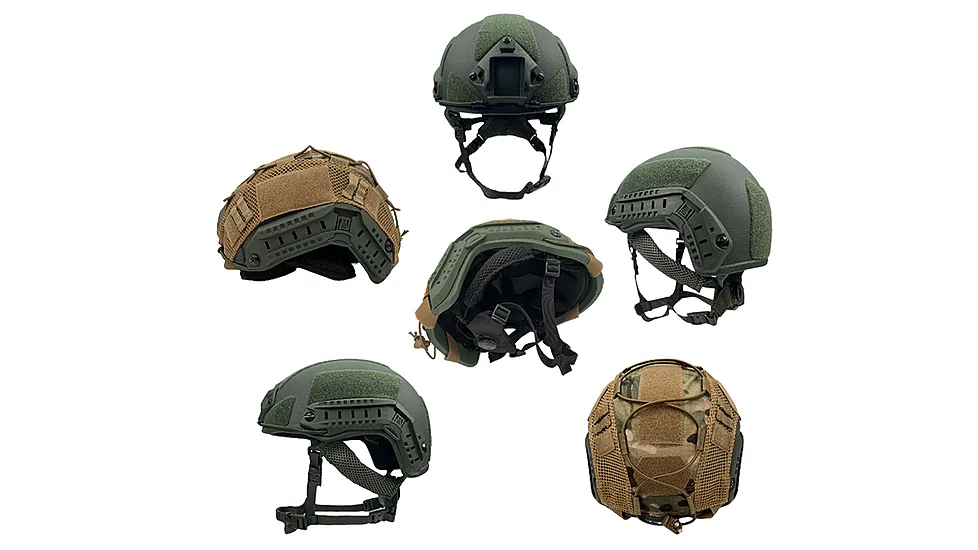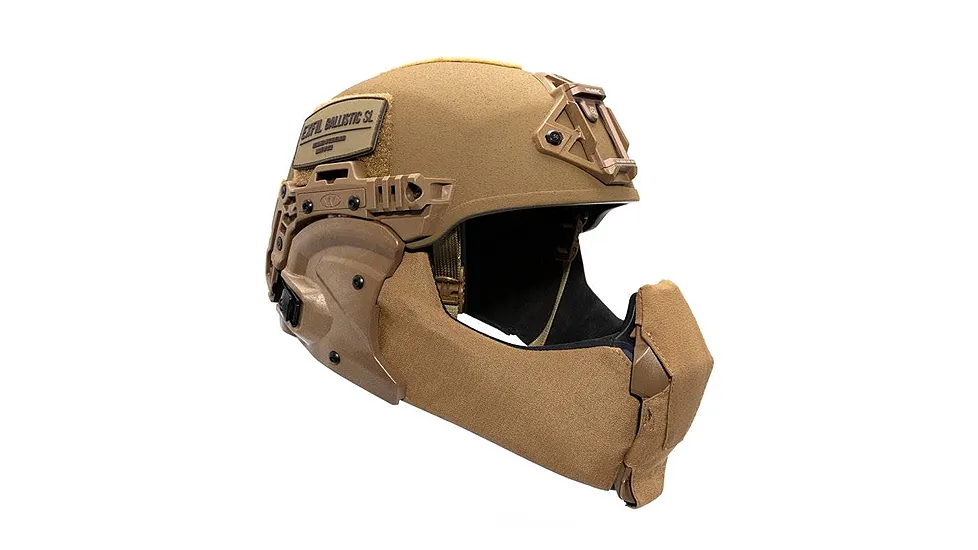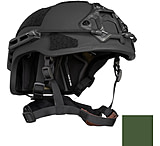There are tons of accessories and pieces of equipment that can make your firearms training more realistic and help prepare you, and few are as important as a reliable tactical helmet. Also known as a ballistic helmet, these head coverings are designed with protection, durability, and reliability in mind, giving you plenty of advantages while out in the field. While military and law enforcement agencies often provide tactical helmets, training with one in your off time lets you get used to wearing and using it so that you’re even more effective during operations and high-pressure scenarios. If you’re looking at buying a tactical helmet to help you in your training or even to upgrade the one you use for your job, here’s everything you need to know about them.![]()
What Is the Difference Between a Ballistic Helmet and a Tactical Helmet?
 While the terms “ballistic helmet” and “tactical helmet” are often used interchangeably, they are not exactly referring to the same thing. Generally, a ballistic helmet is a head covering that has the primary function of protecting your head from shrapnel, debris, and even small arms fire. These are utilitarian helmets that have varying levels of protection ranging from simple shock absorption and blunt impact coverage all the way up to Level IIIA bulletproof capabilities. Ballistic helmets are perfect for security forces and law enforcement personnel who need the extra protection but don’t need to attach high-tech equipment to their gear.
While the terms “ballistic helmet” and “tactical helmet” are often used interchangeably, they are not exactly referring to the same thing. Generally, a ballistic helmet is a head covering that has the primary function of protecting your head from shrapnel, debris, and even small arms fire. These are utilitarian helmets that have varying levels of protection ranging from simple shock absorption and blunt impact coverage all the way up to Level IIIA bulletproof capabilities. Ballistic helmets are perfect for security forces and law enforcement personnel who need the extra protection but don’t need to attach high-tech equipment to their gear.
On the other hand, tactical helmets are like upgraded versions of ballistic helmets. They often have a high level of protection for serious operations, such as military engagements. They also come equipped with mounting ports and other customization options that let you change how the helmets function to suit your unique needs. For example, many of them have a shroud on the front of the helmet that allows you to attach mounting plates for night vision goggles or a thermal monocular. This gives you excellent sight in dark environments or other areas where it is difficult to see while keepings your hands free to maneuver your weapon and clear obstructions. They can even have mounts for body cameras and other accessories, such as flashlights.
What Are the Best Tactical Helmet Accessories?
There are many ways to customize your tactical helmet to suit unique engagement scenarios and operations, enhancing their functionality. If you’re looking to get a full tactical helmet setup, here are some of the most popular tactical helmet accessories.
 Night Vision Goggles: A tactical helmet with a night vision shroud gives you an excellent platform for maximizing your maneuverability and awareness. The shroud works with a mounting plate that allows you to attach night vision goggles or night vision binoculars, as well as a moving arm so that you can raise or lower the device as needed.
Night Vision Goggles: A tactical helmet with a night vision shroud gives you an excellent platform for maximizing your maneuverability and awareness. The shroud works with a mounting plate that allows you to attach night vision goggles or night vision binoculars, as well as a moving arm so that you can raise or lower the device as needed.- Face Shield: A ballistic face shield attaches to the sides of your tactical helmet and extends in front of your face. It can either be a full shield that covers your entire face or you can opt for ballistic mandibles which only cover your cheeks and mouth. There are also ballistic visors that extend from the top of the helmet and only cover your eyes.
- Comms Adapters: Tactical operations require quick communication, which is why many tactical helmets allow you to install adapters for your headsets. There are even quick detach adapters so that you can remove your headset quickly and easily when you’re out in the field if it gets damaged.
- Accessory Mounts: Many tactical helmets come with areas where you can attach rail mounts or dovetail mounts, allowing you to equip multiple other items to the helmet. For example, you can attach a laser designator to point out something for your team to see or a flashlight to illuminate the area without taking your hands off your weapon.
How Is a Tactical Helmet Supposed to Fit?
 When wearing a tactical helmet, you want it to be snug but not too tight, as you need full range of motion of your neck and head to stay safe and aware of your surroundings. Additionally, you don’t want the rim of the tactical helmet obscuring your vision, so make sure that it ends at least half an inch above your eyebrows to ensure you have a clear line of sight. A snug fit helps protect your head from impacts, as you don’t want your head to be moving around when you fall or something hits you, as this can cause more damage.
When wearing a tactical helmet, you want it to be snug but not too tight, as you need full range of motion of your neck and head to stay safe and aware of your surroundings. Additionally, you don’t want the rim of the tactical helmet obscuring your vision, so make sure that it ends at least half an inch above your eyebrows to ensure you have a clear line of sight. A snug fit helps protect your head from impacts, as you don’t want your head to be moving around when you fall or something hits you, as this can cause more damage.
To get the right helmet size, start by measuring the circumference of your head. Once you have the measurement, review the sizing guidelines of the manufacturer. Most helmets come in standard small, medium, large, and extra large sizes, with each one corresponding to a contained range of head circumferences. You should get one that allows for an inch or two of space, as this can make the helmet more comfortable and allows you to add extra padding inside if you need it.
Shop Tactical Helmets Today!
Our team at OpticsPlanet has assembled the best products across the firearm and tactical industry to bring you everything you need for any situation. We have tons of AR 15 parts to help you customize and outfit your favorite rifle, as well as plenty of ammo to make sure you’re ready for the next range day. And if you’re looking for body armor, we have a variety of soft armor and ballistic plates to complete your tactical gear outfit.






